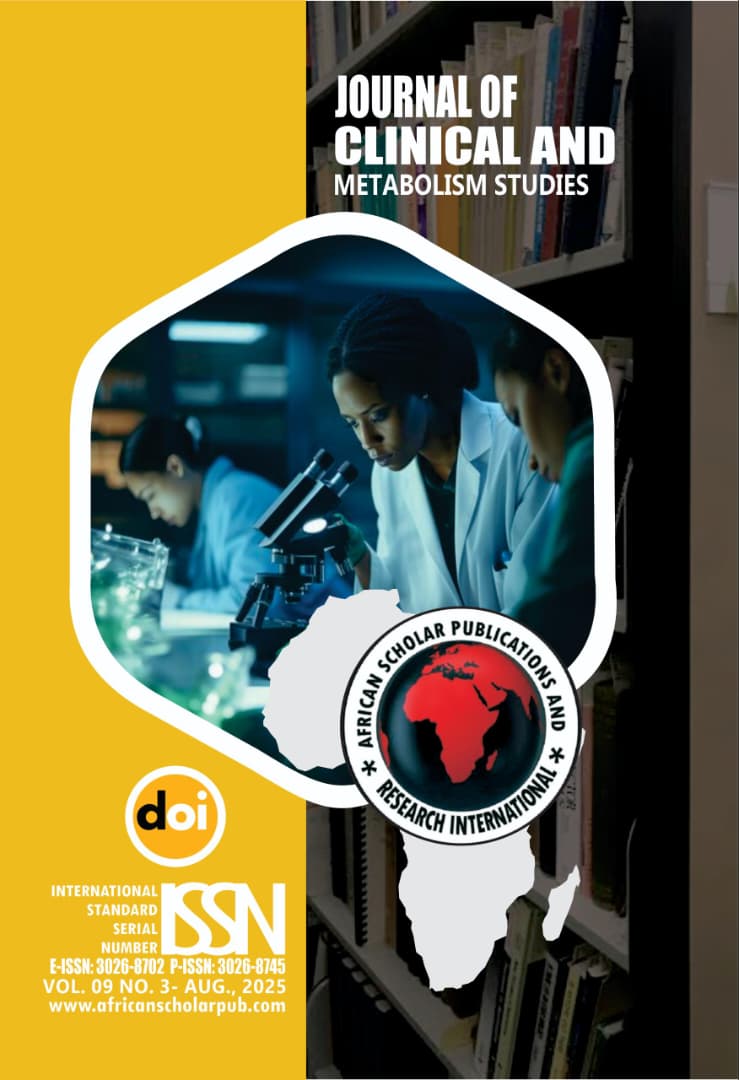A GC-MS Analytical Study of Pesticide Residues in Citrullus lanatus (Watermelon) and Mangifera indica (Mango) from Jimeta, Yola, Nigeria
Abstract
Pesticide residues in fruits represent a major food safety concern, particularly in developing countries where weak regulation and limited farmer training contribute to misuse. This study assessed pesticide contamination in watermelon (Citrullus lanatus) and mango (Mangifera indica) fruits obtained from Jimeta market in Yola, Nigeria, using gas chromatography–mass spectrometry (GC–MS). Five pesticide residues were detected across both fruits: dichlorvos, chlorpyrifos, naled, metrifonate, and metobromuron. Residue concentrations ranged from 0.40 to 2.10 mg/kg, with mango consistently exhibiting higher levels than watermelon. Notably, dichlorvos (0.85–1.50 mg/kg) and chlorpyrifos (1.20–2.10 mg/kg) exceeded Codex Alimentarius maximum residue limits (MRLs), raising serious food safety concerns. Comparison with previous studies in Nigeria and other African countries indicated similar patterns of organophosphate misuse, suggesting systemic regulatory and enforcement gaps. The detection of metrifonate, a pesticide discontinued for medical use, and metobromuron, a persistent herbicide, further underscores the diversity of chemical exposures in fruits. The presence of multiple residues in single commodities suggests potential additive or synergistic toxic effects, which are not addressed by single-compound MRLs. The findings have significant public health implications, especially for children and other vulnerable groups, who are more susceptible to chronic neurotoxic and endocrine-disrupting effects. Policy implications include the urgent need for strengthened surveillance, improved farmer education on safe pesticide use, and the promotion of integrated pest management practices. This study provides baseline data for Nigerian food safety stakeholders and contributes to global discussions on sustainable agriculture and consumer protection.
Keywords:
Pesticide residues, GC-MS, Watermelon, Mango, Organophosphates, Food safety, NigeriaDownloads
Downloads
ACCESSES
Published
Issue
Section
License
Copyright (c) 2025 Alpha Paul Buba, Ndahi A. Jibril, Baba, A. I., Munyal Hananiya (Author)

This work is licensed under a Creative Commons Attribution 4.0 International License.















